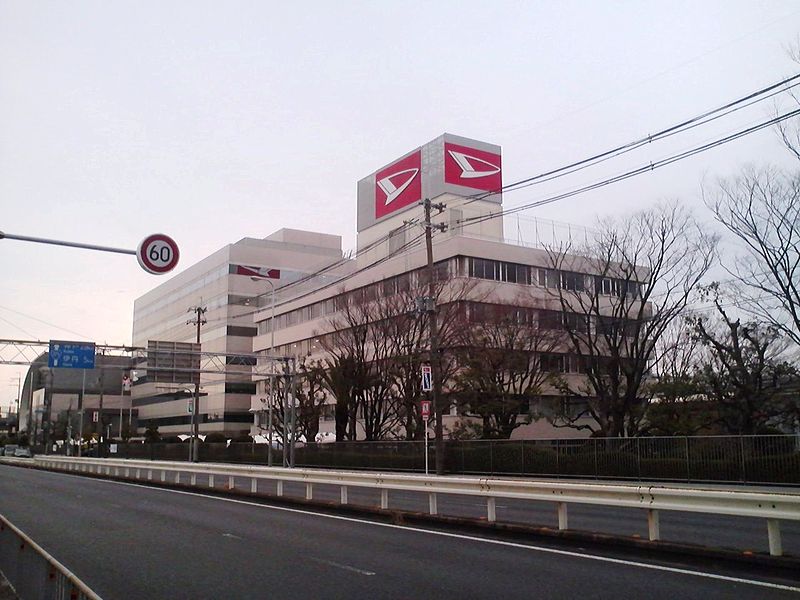One of the most well-known and significant industries in the world is the automobile industry in Japan. Throughout the 1960s, Japan has surpassed Germany to become one of the top three auto-producing countries.
From the 1970s to the 1990s, when it was geared toward both local consumption and international export, the automobile industry in Japan had fast growth. In the 1980s and 1990s, it overtook the US as the production leader, producing up to 13 million cars annually and making sizable exports.
With an annual production of 9.9 million vehicles in 2012, Japan is currently the third-largest automotive producer in the world following China’s enormous expansion in the 2000s and fluctuating US output. Over the past few decades, Japanese investments have boosted the auto industry in many nations.
The History of Japanese Cars
Komanosuke Uchiyama built the first automobile in Japan in 1902, using a gasoline engine brought back from the United States. In 1907, he built the first fully Japanese-made automobile. Torao Yamaha created the first Japanese-made bus, which could seat ten people, in 1904. By 1914, Mitsubishi Zosen began producing its first automobile, the Model A.
By 1930, American automakers had begun constructing vehicles in Japan for the Japanese market and were producing roughly 20,000 units per year. Domestic Japanese firms were producing fewer than 500 units. By 1935, Japan’s industrialization was well advanced, with as many as 16 companies producing automobiles.
The Japanese government passed the Automobile Manufacturing Industries Act in 1936, with the goal of breaking the American car monopoly. Toyota and Datsun were among the companies founded under this statute in 1936.
The Japanese Automotive Manufacturers Association (JAMA) was founded in 1967. JAMA was founded to assist automakers in dealing with changes in Japan’s economy, such as liberalized car imports, as a result of Japan’s admission into the General Agreement on Tariffs and Trade (GATT).
Japanese automakers have established themselves as world-class businesses by 1985. Innovations in manufacturing systems, management systems, and automotive materials remained unparalleled until the mid-1990s.
The oldest Japanese car company
Daihatsu Motor Co., Ltd.
One of the oldest still operating Japanese internal combustion engine producers is Daihatsu Motor Co., Ltd., better known as Daihatsu. Daihatsu is a Japanese carmaker. The company’s main office is in Ikeda, Osaka Prefecture.
In the past, Daihatsu was well known for producing three-wheeled and off-road vehicles. Today, the company sells a variety of kei car models in Japan, in addition to kei trucks, kei vans, and various larger small cars.
Under the Toyota brand, the business also manufactures entry-level compact automobiles in Japan and Southeast Asia for export to growing countries worldwide. As of 2021, Daihatsu’s operations are only present in Japan, Indonesia, and Malaysia (under the Perodua brand), where the business maintains sizable R&D, manufacturing, and sales operations.
Since August 2016, the business has been a fully owned subsidiary of the Toyota Motor Corporation. By 2021, 4% of the total vehicle sales for the Toyota Group will be made up of Daihatsu sales.
Mitsubishi Motors Corporation
Mitsubishi Motors Corporation is a multinational Japanese automaker with its headquarters located in Minato, Tokyo, Japan. In terms of production, Mitsubishi Motors was the sixth-largest automaker in Japan and the 19th-largest globally.
The Mitsubishi Shipbuilding Co., Ltd. first unveiled the Mitsubishi Model A in 1917, marking the beginning of Mitsubishi as an automobile manufacturer. Seven-seater sedan that was fully hand-built and based on the Fiat Tipo 3 was canceled in 1921 after only 22 had been constructed because it was too expensive compared to its mass-produced competitors in the United States and Europe.
Mitsubishi Shipbuilding and Mitsubishi Aircraft Co., which was formed in 1920 to manufacture aircraft engines and other parts, merged in 1934. The merged firm, known as Mitsubishi Heavy Industries, was the biggest privately owned corporation in Japan.
MHI primarily manufactured aircraft, ships, train cars, and machinery, but it also developed the PX33, a military-inspired sedan prototype, in 1937. It was the first passenger automobile produced in Japan with full-time four-wheel drive, a feature the manufacturer would subsequently use again over 50 years later in an effort to succeed in motorsport and in sales.
Isuzu Motors Ltd.
Kanagawa Prefecture’s Yokohama serves as the corporate headquarters for Isuzu Motors Ltd., a multinational Japanese automaker. Its primary business is the manufacture, marketing, and sale of Isuzu commercial vehicles and diesel engines.
The history of Isuzu Motors began in 1916, when Tokyo Ishikawajima Shipbuilding and Engineering Co., Ltd. sought to develop automobiles in collaboration with the Tokyo Gas and Electric Industrial Company.
In 1918, a technological collaboration with Wolseley Motors Limited begun, providing exclusive rights to the production and sales of Wolseley automobiles in East Asia from knock-down kits. The Fifteen A9 15/40 P, a Wolseley type, was constructed in Japan for the first time in 1919 at the Tokyo Ishikawajima Shipyard at the Fukagawa Factory.
Isuzu has assembly and manufacturing operations in Fujisawa, which have existed since the firm was founded under previous names, as well as in the prefectures of Tochigi and Hokkaido. Isuzu-branded cars are available in the majority of commercial markets around the world. Isuzu’s principal market concentration is on commercial diesel-powered trucks, buses, and construction equipment.
Nissan Motor Co. Ltd.
Nissan Motor Company, Ltd., is a Japanese multinational vehicle manufacturer located in Yokohama, Kanagawa Prefecture, Japan. The corporation distributes vehicles under the Nissan and Infiniti brands, and previously under the Datsun name, as well as in-house performance tuning items (including cars) under the Nismo and Autech brands.
The Nissan zaibatsu, today known as Nissan Group, was founded in the early twentieth century. Since 1999, Nissan has been a member of the Renault-Nissan-Mitsubishi Alliance, a partnership involving Nissan, Mitsubishi Motors of Japan, and Renault of France.
Nissan was the world’s sixth largest carmaker in 2017, next to Toyota, Volkswagen Group, Hyundai Motor Group, General Motors, and Ford. Nissan was the largest automaker in North America in 2014. Nissan was the ninth largest vehicle manufacturer in the world in 2022, with $78 billion in revenue, as well as the leading Japanese brand in China, Russia, and Mexico.
Nissan was the world’s leading electric vehicle manufacturer as of April 2018, with global sales of more than 320,000 all-electric vehicles. The Nissan LEAF is the best-selling vehicle in the automaker’s fully-electric lineup, ranking second in the world only behind the Tesla Model 3.
Toyota Motor Corporation
Toyota Motor Corporation is a Japanese multinational automaker based in Toyota City, Aichi, Japan. Kiichiro Toyoda created the company on August 28, 1937. Toyota is one of the world’s major automobile manufacturers, producing over 10 million automobiles per year.
The company began as a spinoff of Toyota Industries, a machine manufacturer founded by Kiichiro’s father, Sakichi Toyoda. These companies are now part of the Toyota Group, which is one of the world’s largest conglomerates.
While still a division of Toyota Industries, the firm created its first product, the Type A engine, in 1934, and its first passenger automobile, the Toyota AA, in 1936. Toyota Motor Corporation produces automobiles under four brands as of 2022: Daihatsu, Hino, Lexus, and the brand Toyota.
In addition, the company owns 20% of Subaru Corporation, 5.1% of Mazda, 4.9% of Suzuki, 4.6% of Isuzu, 3.8% of Yamaha Motor Corporation, and 2.8% of Panasonic, as well as stakes in vehicle manufacturing joint ventures in China (FAW Toyota and GAC Toyota), the Czech Republic (TPCA), India (Toyota Kirloskar), and the United States (MTMUS).
Subaru Corporation
Subaru Corporation is a Japanese multinational corporation and conglomerate that primarily manufactures terrestrial and aeronautical transportation. Founded in 1953 by Kenji Kita, this company is known for its Subaru car brand.
In the late 1980s, the company had become a major provider of military, aeronautical, and railroad equipment in Japan, but autos accounted for 80% of its sales. Subaru Corporation currently manufactures Subaru brand automobiles, and its aerospace division manufactures utility and attack helicopters for the Japanese Self Defense Force, as well as trainers, unmanned aerial vehicles, and the center wings of Boeing 777 and Boeing 787 jets.
Suzuki Motor Corporation
Founded by Michio Suzuki, Suzuki Motor Corporation is a Japanese multinational mobile manufacturer located in Hamamatsu, Shizuoka.. Automobiles, motorbikes, all-terrain vehicles (ATVs), outboard marine engines, wheelchairs, and a range of other small internal combustion engines are produced by the company.
Suzuki was the world’s eleventh largest automaker by output in 2016. Suzuki employs about 45,000 people and operates 35 manufacturing facilities in 23 countries, as well as 133 distributors in 192 countries. Automobile sales are the tenth largest in the globe, while domestic sales are the third highest in the country. Suzuki has the third highest domestic motorbike sales volume in Japan.
Mazda Motor Corporation
Mazda Motor Corporation, also known simply as Mazda, is a Japanese multinational automaker headquartered in Fuch, Hiroshima, Japan. Jujiro Matsuda began the company on January 30, 1920 as Toyo Cork Kogyo Co., Ltd., a cork-making factory.
In 1927, company changed its name to Toyo Kogyo Co., Ltd. and began manufacturing vehicles in 1931. The name Mazda was derived from Ahura Mazda, the Zoroastrian god of harmony, knowledge, and wisdom, as well as the founder’s surname.
Mazda is one of Japan’s and the world’s largest automakers. In 2015, it produced 1.5 million automobiles for global sales, roughly one million of which were manufactured in Japan and the remainder in different other nations.
Mazda is well-known for its cutting-edge technology, including the Wankel engine, the SkyActiv platform, and the Kodo Design language. It also has a lengthy history in motorsport, having won the 24 Hours of Le Mans with the rotary-powered Mazda 787B in 1991.
Wrapping it up
Japanese automakers pioneered hybrid and electric vehicle technology. As a result, Japanese cars are well-known for their high-tech brand image, great reliability, and low malfunction rate. In the nearly 100-year history of Japanese automobiles, Japanese businesses have always been the forerunners of new emerging technologies.









